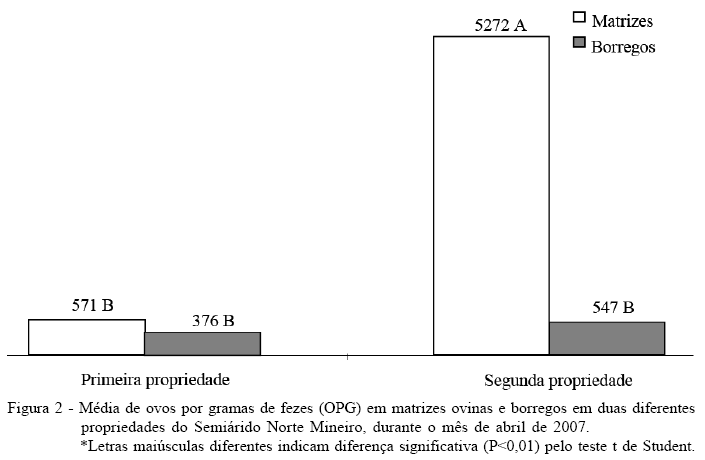The verminosis is one of the principal sanitary problems in ovine herds in Brazil and around the world. However, little is known about the seasonal variation of the helminth contamination and the effects of the combination of a strategy control and a tactical control in sheep raised under in the Northern Minas semiarid conditions. In this study, the objective was to evaluate the seasonal helminth contaminations in lambs and ewes under an integrated control in the North of Minas Gerais, Brazil. The research was carried through during December 2006 to November 2007. Monthly faecal samples from 30 lambs and 30 ewes of one farm were collected. During April 2007, 68 sheep of a second farm were also evaluated, corresponding to the peri-partum time to both farms. The samples were collected directly from the recto and the faecal egg count (FEC) was determined and evaluated by variance analysis. The ewe FEC increased significantly in May and October ,which were peri-partum periods. Lamb FEC increased significantly in March , which coincided with the rainy season end. The integrated control was efficient to reduce the contaminations after these related periods. After the larvae culture, the genus Trichostrongylus, Haemonchus and Strongyloides were the most observed to both dry and rainy periods. During April 2007 the ewe contamination was significantly higher in the second farm that did not treat these animals in the pre-partum.
epidemiology; ovine helminthosis; peri-partum; integrated control



